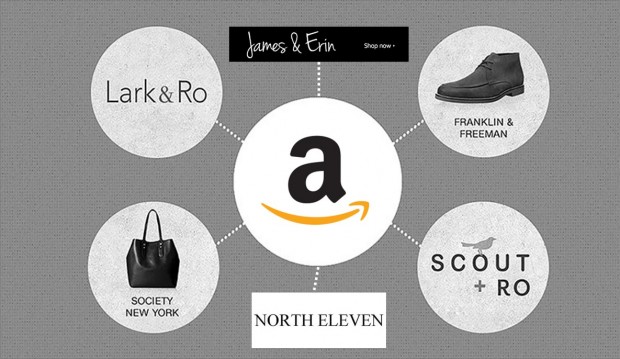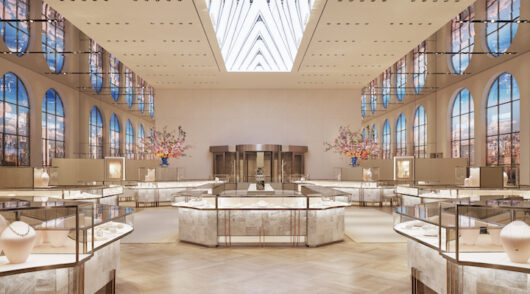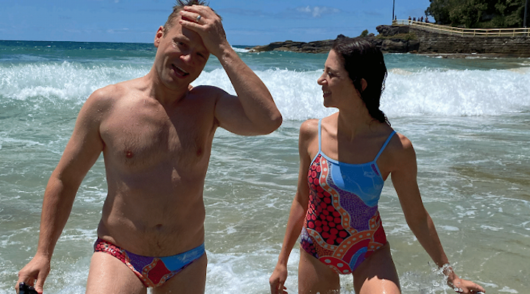 In a note to clients on June 20, US-based UBS analyst Eric Sheridan wrote that Amazon is “increasingly well positioned” to capture a portion of the fast growing North American online fashion market.
In a note to clients on June 20, US-based UBS analyst Eric Sheridan wrote that Amazon is “increasingly well positioned” to capture a portion of the fast growing North American online fashion market.
According to Sheridan, Amazon Fashion could generate US$40 billion ($53.8 billion) in gross merchandise volume (GMV) by 2022. GMV is a metric marketplaces use to measure the dollar value of items sold through their site instead of revenue, which includes fees charged to third-party sellers.
To put this figure in context, Zara parent Inditex reported net sales of €5.7 billion ($8.9 billion) in the quarter ending 30 April 2018.
But even Sheridan’s estimate is conservative compared to research firm Instinet, which thinks Amazon’s apparel business could bring in US$45 billion ($60.6 billion) to US$85 billion ($114.4 billion) by 2020.
Eye-popping as these numbers may be, they are not exactly news. In a 2015 report, financial firm Cowen and Company predicted Amazon would outpace Macy’s as the largest apparel retailer in the US by 2017 and claim 16.2 per cent of the entire US apparel market by 2021.
It is difficult to say whether Amazon has reached that milestone, given the company’s lack of disclosure, but a recent report by digital marketing agency SimilarWeb, which tracks retailers’ desktop and mobile traffic, suggests Macy’s may still hold the top spot.
From need-to-have to want-to-have
Despite three years of predictions, however, there is a sense that Amazon so far has failed to follow through on its threat to disrupt the fashion industry.
Sheridan, the UBS analyst, noted to clients that a recent survey of 9000 consumers found “very few” respondents see Amazon as a site for trendy designs, fresh collections, or unique designs. One reason for this may be that designer brands tend to sell “core replenishment items” rather than “unique fashion items” on Amazon, he said.
Indeed, research firm L2 analysed the type of clothing on Amazon’s bestseller list and found that most of the brands trade in commodity-type apparel, such as socks and underwear, rather than fashion items.
This is true too for Amazon’s local site in Australia, where its bestselling women’s clothing items include a 10-pack of Hanes women’s athletic socks for $4.95 and a pair of Puma women’s leggings for $20.
Amazon’s fashion gap is not for lack of trying. The company last year hired former Victoria’s Secret CEO Christine Beauchamp as president of its fashion business and, until recently, Megan Salt, who previously worked for Vogue, was the vertical’s head of communications.
The company has also ramped up its own fashion offering, releasing at least 60 private-label brands, predominantly in the clothing, shoes and jewellery categories, since the start of 2017, according to L2.
Many of these brands, such as Amazon Essentials, Goodthreads and Daily Ritual, trade in basics, such as plain cotton t-shirts. However, there are a growing number of style-conscious lines, such as Lark & Ro, which offers a range of trendy dresses, tops, pants and outerwear for women, and Find, a men’s and women’s clothing line launched in Europe last year that could easily pass for Asos or Topshop.
At the time of this writing, Amazon had not yet launched its private-label brands in Australia.
Food and fashion
Why is Amazon so intent on conquering fashion? The global apparel and accessories market is worth more than US$1 trillion ($1.3 trillion), according to Instinet analysts, with higher margins than categories like electronics or food.
According to the book, The Everything Store: The Age of Amazon and Jeff Bezos, Jeff Bezos told Amazon employees in 2007 that “in order to be a two-hundred-billion-dollar company, we’ve got to learn how to sell clothes and food”.
With Amazon’s acquisition of US grocery chain Whole Foods Market last year, Bezos seems to be faring better on the food front than fashion. But that may soon change.
Amazon last week launched a new offering in the US called Prime Wardrobe, which lets customers order between three and eight items of clothing, shoes and accessories at no up-front cost, try everything on at home within seven days, return what they don’t like and only pay for what they keep.
The service is expected to make it easier for customers to make the switch from buying clothes in-store to shopping online, since it reduces the cost and hassle of returning items if they don’t fit.
But, Amazon being Amazon, it seems likely the company will eventually leverage the data it gathers on what shoppers buy and what they actually keep to further refine its fashion offering.





